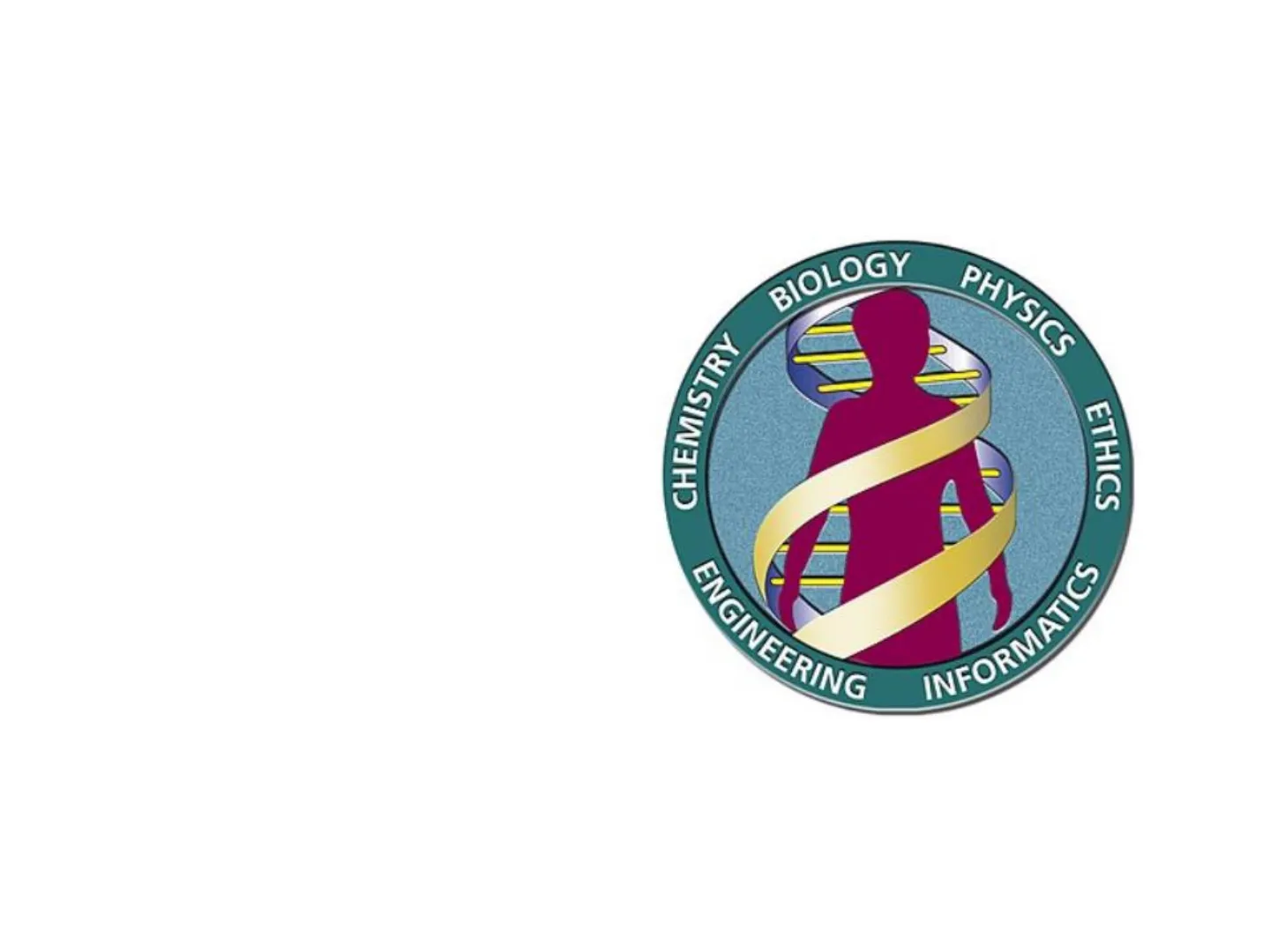The Human Genome Project: DNA sequencing and molecular biology techniques
Slides about The Human Genome Project. The Pdf, a Presentation for University Biology students, details the Human Genome Project, DNA sequencing, and molecular biology techniques, including oligonucleotide synthesis and primer hybridization.
See more55 Pages


Unlock the full PDF for free
Sign up to get full access to the document and start transforming it with AI.
Preview
The Human Genome Project Overview
The Human Genome ProjectThe Human Genome Project (HPG) meant figuring out the order of over 3 billion of DNA nucleotides (or bases, or genetic letters), i.e. the order of As, Cs, Gs, and Ts that make up a human organism's DNA. Beginning in October 1990, it was completed in April 2003.
BIOLOGY PHYSICS CHEMISTRY ETHICS ENGINEE MATICSThe National Human Genome Research Institute (NHGRI) of the NIH, planned to complete the sequencing project in 15 years at a cost of $3 billion by coordinating the work of a number of leading academic research centres.
National Human Genome Research Institute
NIH National Human Genome Research Institute
- About Genomics
- Research Funding
- Research at NHGRI
- Health
- Careers & Training
- News & Events
- About NHGRI
Home / About Genomics / The Human Genome Project / What is the Human Genome Project? What is the Human Genome Project? The Human Genome Project (HGP) was the international, collaborative research program whose goal was the complete mapping and understanding of all the genes of human beings. All our genes together are known as our "genome."
Public and Private Collaboration
However, a rival operation, Celera Genomics, emerged in 1998 and appeared to be working even faster than the HGP at deciphering the human DNA sequence. Celera had devised its own, quicker method.However, in the end the public and private endeavours came together. In 2000, Collins (HGP), Venter (Celera), and the U.S. President Bill Clinton gathered in Washington, D.C., to announce that the rough draft sequence of the DNA in the human genetic map had been completed through the combined effort of Collins's public research consortium and Venter's private company.
Nature Journal Publications
nature 15 February 2001 3-1- 1.5 www.nature.com the human genome
- Nuclear fission
- Five-dimensional energylandscape's
- Seafloor spreading
- The view from under the Arctic icepack
- Career prospects
- Sequence creates new opportunities
naturejobs genomics special Collins/HGP Paper Science Vol. 291 No. 5507 Pages 1145-1434 $9 THE HUMAN GENOME AMERICAN ASSOCIATION FOR THE ADVANCEMENT OF SCIENCE Venter/Celera Paper
DNA Replication Process
DNA replication (in a nutshell ... )The knowledge (in a pill ... ) of how a DNA molecule naturally duplicate lies at the basis of a DNA sequencing protocol.
5' 3' - New New Parent strand Daughter strands Parent strand
DNA Templating Mechanism
DNA templating is the mechanism the cell uses to copy the nucleotide sequence of each single DNA strand into a complementary DNA sequence. This process requires the separation of the DNA helix into two template strands.For the synthesis of a new daughter strand, each nucleotide in the DNA template strand has to be recognized by a free (unpolymerized) complementary one, to respect the regular A-T vs. C-G complementarity.
3 end of strand I 5 end of strand O TO- P=O O CH2 C G -O- O= P-O- HỌC PRIMER STRAND TEMPLATE STRAND O O CH2 TO- P=O A T O O= P-O- HỌC O OH CH2 3 end of strand C G O Q O O= P-O- O 0- 0 pyrophosphate OH O CH2 A O O= P-O O O CH2 T O OF P-O- O 5' end of strand -O- TO- P-O- P-O- P-O-CH, O. incoming deoxyribonucleoside triphosphate Otemplate strand 5' 3 5 DV primer strand CORRECT POSITIONING OF INCOMING DEOXYRIBONUCLEOSIDE TRIPHOSPHATE NUCLEOTIDE INCORPORATION FOLLOWED BY DNA TRANSLOCATION DNA polymerase P P
DNA Polymerase Enzyme Function
The DNA polymerase enzyme (protein), catalyzes the stepwise addition of a deoxyribonucleotide to the 3' -OH end of a growing polynucleotide chain, a new strand paired to an already existing template strand. The newly synthesized DNA strand therefore polymerizes in the 5'-to-3' direction. Because each incoming deoxyribonucleoside triphosphate must pair with the template strand to be recognized by the DNA polymerase, this strand determines which of the four possible deoxyribonucleotides (A, C, G, or T) will be added. The reaction is driven by a large, favorable free-energy change, caused by the release of pyrophosphate and its subsequent hydrolysis to two molecules of inorganic phosphate.
DNA Replication Machinery and Cell Cycle
DNA replication machinery environment Is all DNA replicated? mitosis machinery Is environment favorable? Is cell big enough? Are all chromosomes aligned on spindle? cell growth Gz CHECKPOINT METAPHASE CHECKPOINT ENTER M ! EXIT FROM M ! M G CONTROLLER G1 S START ! G1 CHECKPOINT cell growth Is cell big enough? Is environment favorable? environment
In most eukaryotic cells DNA replication occurs only during a specific part of the cell-division cycle, called the DNA synthesis phase or S phase. In a mammalian cell, the S phase typically lasts for about 8 hours
+ M G2 G1 S G1: cell size increase S: DNA synthesis G2: preparation to division M: cell divisionIn a round of replication events, each of the two original strands of DNA is used as a template for the formation of a new complementary DNA strand.
Over and over ... REPLICATION REPLICATION REPLICATION
Resuming DNA Replication Steps
Resuming DNA replication
- The DNA double helix is "unzipped" (by enzymes).
- The two separated strands act as templates (for creating two more strands of DNA).
- A short piece of RNA called a "primer" binds to the template strand *.
- An enzyme called DNA polymerase binds to the primer.
- DNA polymerase starts making a new strand of DNA by incorporating free nucleotide bases (A, C, G and T) that are complementary to the DNA on the template strand.
- This continues until two identical copies of the original, double-stranded molecule are produced.
DNA Polymerase I Primase 1 G G G T G G A C A C T G G G Single strand binding proteins 5' Lagging strand G 3' O 3' 5' 5 G T C C C G G Topoisomerase 3' Helicase Leading strand 1 A G G T G T A G T G A C A A C A C T G C C C A C T G C A T T A 3' DNA Polymerase III C C A C A C A C C T - G T C G T G 1 C G A C G C A T C C G 1 A + 3' Okazaki fragment (~1200 nucleotides) Ligase -5' T G C A A C - T G * where does it come from? .5' RNA primer (~10 bases)
Electrophoresis for DNA Separation
ElectrophoresisBecause each nucleotide in a nucleic acid molecule carries a single negative charge (on the phosphate group) DNA fragments can be separated using a gel electrophoresis using a gel matrix. When a voltage is applied, larger fragments migrate more slowly than smaller ones because their progress is impeded to a greater extent by the gel matrix. Over time, the DNA fragments become spread out across the gel according to size, forming a ladder of discrete bands, each composed of a collection of DNA molecules of identical length. The lowermost bands on the gel contain the smallest DNA fragments. The sizes of the fragments can be estimated by comparing them to a set of DNA fragments of known sizes. e.g. see: https://www.youtube.com/watch?v=qIW ViVf3ZY https://www.youtube.com/watch?v=M1zFRf3fbQA
DNA size markers LOAD DNA ONTO GEL AND APPLY VOLTAGE negative electrode ® 23 9 nucleotide pairs (x 1000) 6.5 - i - 4.3 - 2.3 - 2 - - positive electrode + slab of agarose gel of same-sized DNA fragments. the DNA fragments evidenced as a bands, representing groups NB: one needs to stain the gel with a DNA-binding dye to have =
Principles of Separation in Electrophoresis
Principles of separation
- According to the charge: when charged molecules are placed in a electric field they migrate toward either the positive (anode) or negative (cathode) pole according to their charge.
- According to the size: the smaller molecules run faster than the big ones, because they can move easily through the pore of the gel.
O2 DNA > + Power direction of electrophoresis 1 201 particles of various sizes 202020 porous matrix 1
Electrophoresis Apparatus Setup
Experimental set-up: Electrophoresis Apparatus
- Electrophoresis apparatus includes: casting tray, comb, electrophoresis chamber, electrodes
Horizontal Vertical owl
Buffer and Power Supply in Electrophoresis
Experimental set-up: Buffer and Power Supply
- Buffer provides ions to carry a current (higher is the buffer strength, higher is the portion of current the flow in the buffer rather than the gel) and to maintain the pH (affects the degree of ionization of inorganic compound), i.e. Tris- acetate-EDTA (TAE) and tris-borate-EDTA (TBE)
- Power Supply produces the Electric Field (E) E=Voltage/electrode distance (better 5V/cm gel);
Electrophoresis apparatus Power supply V = IR V = voltage R = Resistance Voltage Volts Current mA H = VIt H = (IR) It Heat generated (H) = V It V = voltage I = current t = time H = 12 Rt Electrode Buffer
Supporting Media for DNA Separation
Experimental set-up: Supporting Media (gel) To separate DNA molecules longer than 500 nucleotide pairs, the gel is made of a diluted (0,5 - 3 %) solution of agarose (a polysaccharide isolated from seaweed). For DNA fragments less than 500 nucleotides long, specially designed polyacrylamide gels (5 - 15 %) allow the separation of molecules that differ in length by as little as a single nucleotide or proteins. gel mesh
Gel Percentage and Fragment Size
Gel Percentage 1 wt% 1μm (b) 2.9wt% 1um (c) Agarose 1% 2% 3% 10 kb 1 kb 0.25 kb
Detection System for DNA Fragments
Experimental set-up: Detection System
- Detection system includes DNA binding die (i.e. Ethidium Bromide, Syber Green) or protein stain and signal detector (i.e. UV transilluminator).
A ATTENZIONE! 0 ITALY (EU) SCIENTIFIC INSTRUMENTS ELETTROFOR E UVIFOR TRANSILLUMINATOR
DNA Gel Electrophoresis Flowchart
DNA gel electrophoresis flowchart
- Make gel.
- Obtain prepared DNA samples.
- Load samples into gel.
A B |C
- Separate fragments by electrophoresis.
- Stain DNA fragments and measure distances.
6. Prepare a standard curve. Determine fragment sizes. 100,000 10,000- bp 1,000- 100 0 10 20 30 40 50 Distance (mm) 0 - 10 -20 -30 - -40 -50 -60 = ++ e.g. see: https://www.youtube.com/watch?v=qIW ViVf3ZY https://www.youtube.com/watch?v=M1zFRf3fbQA
DNA Sequencing: Sanger's Method
DNA sequencing the Sanger's wayFrederick Sanger has been awarded the Nobel Prize in Chemistry twice.
- 1958 "for his work on the structure of proteins, especially that of insulin"
- 1980 "for his contributions concerning the determination of base sequences in nucleic acids"
Dideoxy Sequencing Principle
base P P P-O-CH2 O 5' K 3' OH allows strand extension at 3 end 3' OH normal deoxyribonucleoside triphosphate (dNTP) base 5' P PP-O-CH2 O K 3 H prevents strand extension at 3'end 3 H chain-terminating dideoxyribonucleoside triphosphate (ddNTP) Dideoxy sequencing, or Sanger sequencing (named after the scientist who invented it), uses DNA polymerase, along with special chain-terminating nucleotides called dideoxyribonucleoside triphosphates (left), to make partial copies of the DNA fragment to be sequenced. These ddNTPs are derivatives of the normal deoxyribonucleoside triphosphates that lack the 3' hydroxyl group. When incorporated into a growing DNA strand, they block further elongation of that strand.